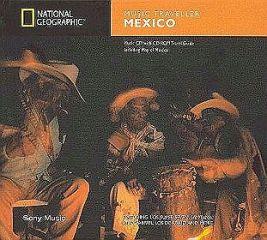Music Traveller – Mexico (2004)
Music Traveller – Mexico (2004)

1. La Reina - Ana Gabriel 2. Sollozando - Los Andariegos 3. El Cihualteco - Mariachi Reyes Del Asseradero 4. Cómo Te Voy A Olvidar - Lucero 5. Guajira - Santana 6. Como Tú 7. Son De La Liberación - Los De Abajo 8. La Tirana - Eugenia Leon 9. Lloraras Lloraras - Javier Solis 10. Sin Un Amor - Trio Los Panchos, Hernando AviléS 11. Paloma Guarumera - Los Super Seven 12. Sale Sobrando - Lila Downs 13. Acapulco - Linda Vera 14. La Celestina 15. Hoy No Quiro - Julieta Venegas
Music is a very important part of Mexican culture and is always part of a celebration, whether big or small. The music of Mexico sings of love, country, passion, history, legend and oppression, among other things. Here are three vibrant genres of traditional Mexican music explained.
Mariachi music is the first thing that comes to mind when one thinks of Mexican music. The term Mariachi is believed to be originated from the French term “mariage” which means marriage, as this music was often played at weddings. Mariachis also play at quinceañeras (girls’ 15th birthday parties), on Mother’s Day, and they are often used to serenade women on their birthday. The band usually consists of violins, trumpets, a classical guitar and a “vihuela” (a five string guitar). Musicians wear a traditional silver studded “Charro” suit, including a sombrero. Mariachi music is said to have originated in the state of Jalisco in the 19th century.
Ranchera music draws on traditional folklore and its songs are usually about love, patriotism or nature. “El Grito Mexicano” a yell that is done during instrumental interludes either by the musicians or by members of the audience is common in Ranchera music. The word Ranchera was derived from the word “rancho” because the music originated on the ranches of rural Mexico. Ranchera music is said to have been born of a new national consciousness during the Mexican revolution in reaction to the aristocratic tastes of the era. Rancheras are varied and can reflect the tempo of a waltz, a polka or a bolero.
The accordion and the “bajo sexto” (a twelve string guitar) are Norteños most characteristic instruments. In the late 19th century European migrants brought the accordion, waltz and polka, from their homeland to Northern Mexico (hence the name Norteño which means “Northern”) and the U.S. Southwest. Local bands adopted these elements, blended them with their Ranchera music, and a new genre was born. The tempo is usually middle or fast. “Tejano” or “Tex-Mex” music is often confused with Norteño, however Tejano is a blend of Norteño and American rock and country music. Grupo Pesado is the leader in Norteño music today.
Although the people of Mexico listen to music from all over the world and also produce their own forms of modern music, traditional Mexican music continues to be very popular with people of all ages. These traditional forms of Mexican music are undeniably colorful, filled with passion and were created in the origins of this culturally rich country. ---haciendatresrios.com
download: uploaded yandex 4shared mediafire solidfiles mega zalivalka filecloudio anonfiles oboom








